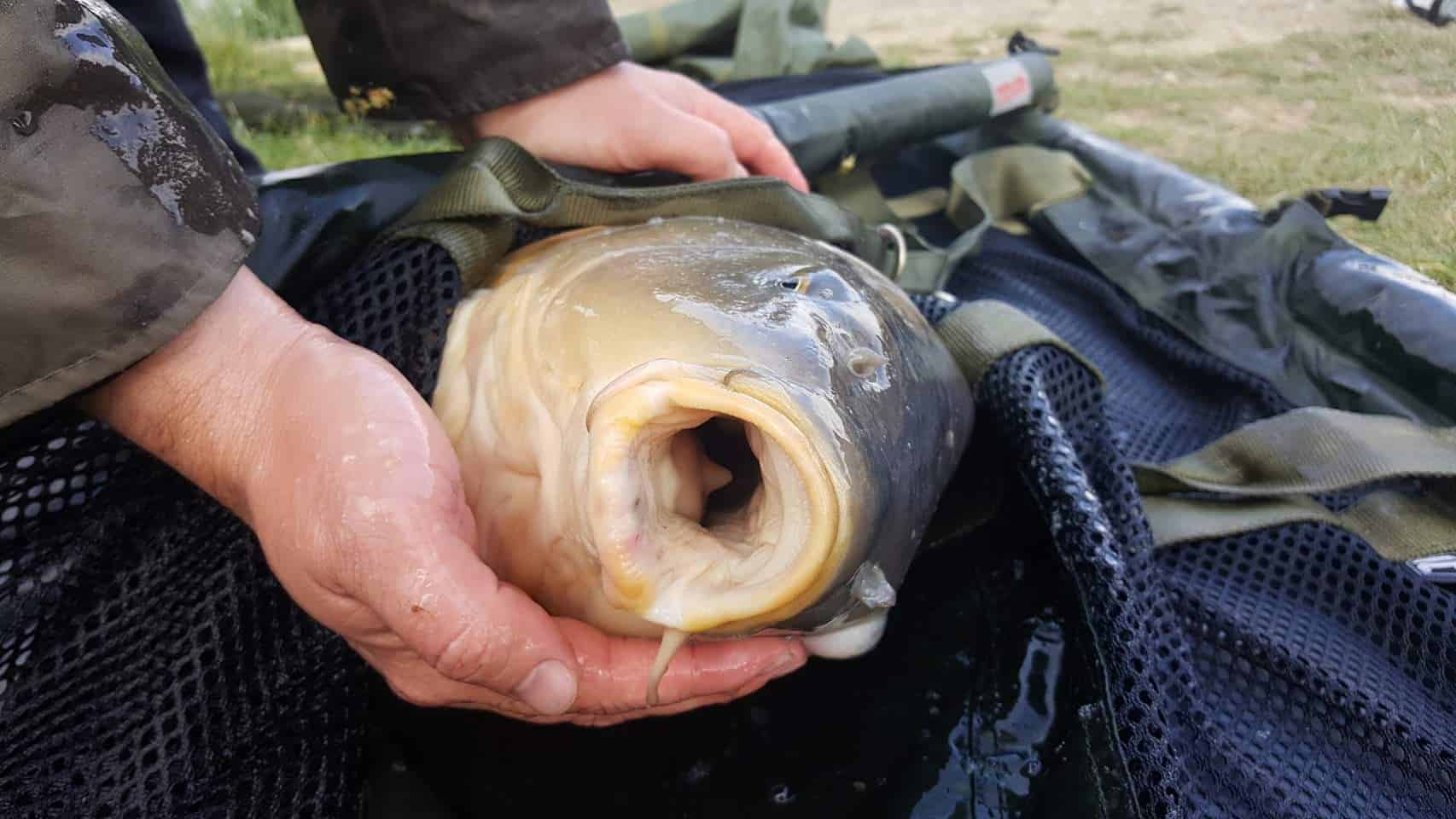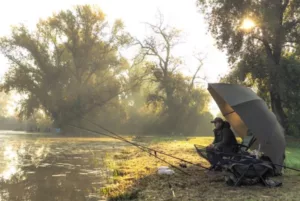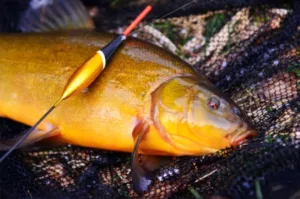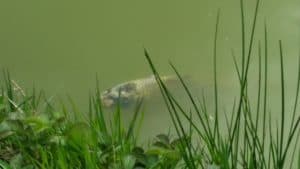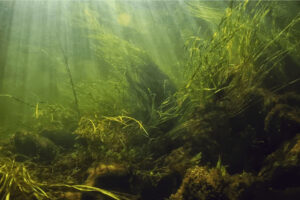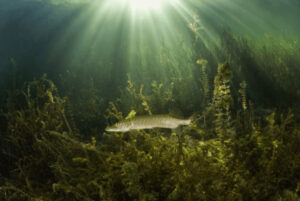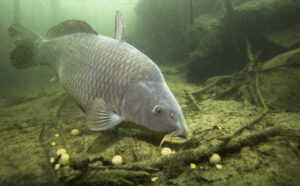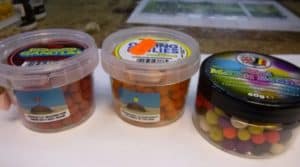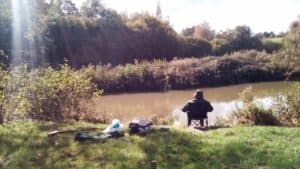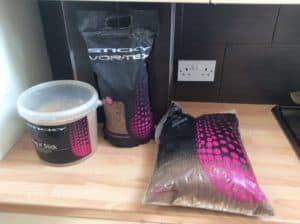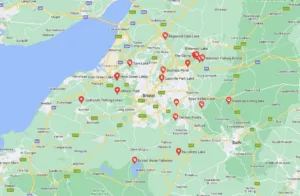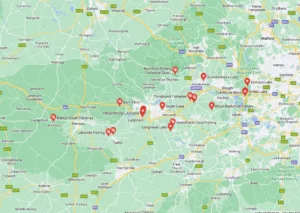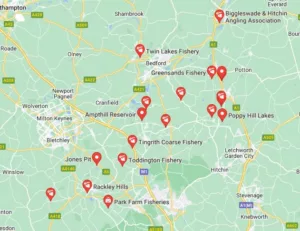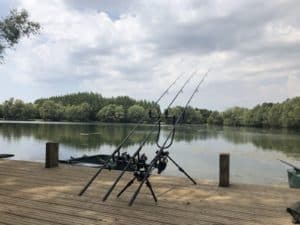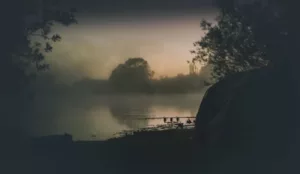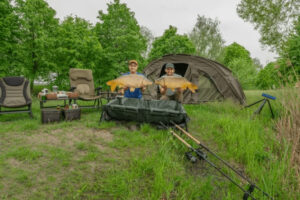Are you looking how to catch bigger carp? Discover strategies on how best to target specific carp when carp fishing.
Learn top tips such as removing visual elements from hookbait, using a boilie-only approach, gathering information about target fish in your lake, and more! Get out there and increase your chances of success with our helpful guide
Carp fishing is a popular sport among anglers. It can be a fun and rewarding experience, especially when it comes to targeting the largest specimen.
Learning how to find these larger carp can give you an edge in catching them.
This blog will provide an overview of carp fishing and the strategies for finding the largest specimen.
The Behaviors of the Oldest Fish
When it comes to carp fishing, it is important to understand the behaviors of the oldest fish in order to locate them more easily.
These older fish typically live in shoals for survival purposes and feed in routes with many obstacles and deeper water for safety.
When targeting these larger specimens, it is important to respect their long-living memory and take extra precautions when catching them.
As any fisherman knows, finding the fish is half the battle.
Carp are notoriously elusive, and even experienced anglers can spend hours without a bite.
So how can you go about finding these wily fish?
The first step is to look for areas of high activity.
Carp tend to congregate in areas with lots of food, so places like secluded backwaters or shallow rivers with dense vegetation are often good spots to start.
Once you’ve found a likely spot, the next step is to start casting your line.
It can take a bit of trial and error to find exactly where the carp are hiding, but patience and perseverance will eventually pay off. With a little luck, you’ll soon be hauling in the big one!
The Benefits of Targeting the Largest Specimen
In addition to understanding the behaviors of older carp, there are several benefits that come with targeting these larger specimens.
They are typically much stronger swimmers than younger ones and therefore offer a greater challenge when catching them.
The largest and oldest fish in a school often behave differently from their younger counterparts.
The smaller fish are usually the first to start feeding when food is available, and the last to stop when food becomes scarce.
The larger fish tend to feed around the edges and scoff less than the smaller fish.
As well as being bigger and stronger, they are also wiser and more experienced.
They know where the safe feeding grounds are, and how to avoid predators.
As a result, they tend to sit at the back of the school, with the other fish taking the lead.
This behaviour can be beneficial for the school as a whole, as it helps to ensure that the fish are able to find food and stay safe.
Wise old carp who have lived for more than 20 years deserve our respect.
They are living memories of a time before humans began to pollute and damage the environment.
These fish have seen it all, and their long lives are a testament to their strength and resilience.
When we see an old fish, we should take a moment to appreciate its wisdom and experience.
We can learn a lot from these wise old creatures, and their stories can teach us about the importance of protecting our planet.
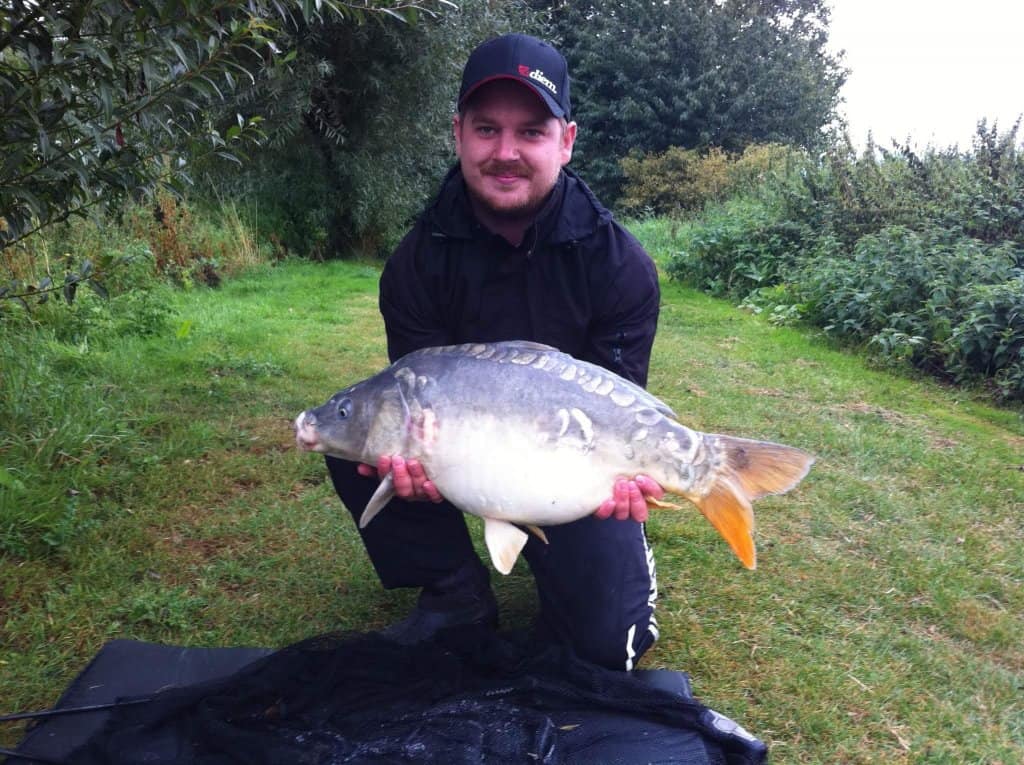
How To Find The Carp
Now that you know why targeting older carp is beneficial, let’s discuss how you can actually find them out on the water.
First off, it’s important to do your research before heading out – look up what type of bait has been successful in your area recently as well as what time of day offers better chances at success (early morning or late afternoon).
Once you’ve done your homework, start looking for areas with lots of cover such as vegetation or fallen trees – this will help narrow down where bigger carp might be hiding out!
Lastly, pay attention to any disturbances on the surface like bubbles or swirls that could be indicative of a large fish under the surface – these signs could lead you right toward your desired target!
Carp are a type of freshwater fish that are popular in many parts of the world, including Asia, Europe, and North America.
They are known for their large size and their ability to live in a wide range of habitats.
One particularly impressive carp is the Koi fish, which can reach weights of up to 45 kg.
To reach such a weight, this carp has dodged many dangers, thanks to living in a shoal.
A shoal is a group of fish that swim together for protection.
When one fish in the shoal is threatened by a predator, the other fish will swarm around it and make it difficult for the predator to single out its prey.
As a result, shoaling provides an important defensive mechanism for carp and other fish species.
Old carp are some of the oldest fish in the world, and they have an interesting feeding route.
Their route often has many obstacles, providing a varied food source and a sense of security.
Carp are not able to see well, so they use their sense of smell to find food.
Old carp often eat small invertebrates, such as crustaceans and insects.
Carp also eat plants, algae, and other aquatic vegetation. In addition to their diet, old carp also consume small stones to help grind their food in their gills.
Old carp are an important part of the ecosystem and provide a valuable service to the environment.
Tips for Targeting Large Carp
Remove Visual Elements from Hookbait
As carp age, they become warier of their surroundings and are more likely to shy away from the bait that contains visible elements such as maggots or ground bait.
To increase your chances of catching older carp, try removing these visual elements from your hook bait.
This will make it less apparent to wary fish that something is amiss in their environment.
Use a Boilie-Only Approach
A boilie-only approach implies using only boilies as your hookbait and eschewing other baits such as worms or sweetcorn.
Boilies come in many shapes and sizes and are packed full of flavour and aroma which makes them attractive to carp of all ages.
They also stay on the hook better than other baits due to their dense texture and buoyancy which increases their effectiveness as a hookbait for bigger fish.
As any angler knows, not all fish are created equal.
Some are bigger, some are smaller, and each species has its own unique feeding habits.
When it comes to carp, size does matter— specifically, the size of the fish’s mouth.
Larger carp have bigger mouths, which means they can feed more slowly, using their sense of smell and taste to find food.
This is why it’s important to remove any visual element from your hookbait when fishing for carp.
The smaller fish are more likely to be attracted by the bright colors and patterns of most bait, while the larger carp will be more interested in the scent and flavor.
By removing the visual element, you’ll increase your chances of landing that trophy carp.
Gather Information About Target Fish in Your Lake
Knowing what kind of fish are present in your target lake will help you tailor your tactics accordingly when trying to catch bigger ones.
If there are smaller fish present then you may need to consider changing up the size or type of bait you’re using so they don’t get picked off before bigger ones have a chance at it; alternatively, if there are only large specimens present then you can adjust your rig appropriately so you don’t miss out on any bites!
When it comes to fishing, Bigger is often Better.
That’s why many anglers target large carp, which can weigh up to 40 pounds or more.
While these fish can be difficult to catch, they are often worth the effort thanks to their huge amounts of power and giving a good fight.
However, landing a big carp is not simply a matter of baiting your hook and casting into the water.
These fish are notoriously wary, and often have specific haunts where they feel safe.
As a result, research plays an important role in successful carp fishing.
By learning about the history of your target fish, you can increase your chances of finding them in their favourite spots.
With a little patience and perseverance, you just might be rewarded with a trophy-worthy catch.
Swim Selection and Previous Captures
Another tip on how to catch bigger carp is to pay attention to where they have been caught before and what swims they are likely to be in.
Pay attention to what other anglers have been catching and which swims seem particularly active with fish—these could be good places for you to start looking if you want a big catch!
When carp fishing, it is important to choose the right swim.
This can be determined by a number of factors, including the time of year and the size and type of carp you are targeting.
For example, if you are looking to target a certain type of carp, it is worth considering previous catches.
This will help you to pinpoint a certain area to fish in and the best time of year to do so.
In addition, the swim selection can be vital when targeting specific carp.
By taking all of these factors into consideration, you can maximise your chances of a successful catch.
Use Strong and Reliable Tackle Components
Once you’ve identified a potential spot, make sure your tackle components are top-notch so that your line won’t break when reeling in your catch.
Invest in strong and reliable components like rods, hooks, lines, bait clips, and swivels so that nothing will hold back your success.
If you’re serious about carp fishing, then you need to use quality tackle.
Cheap components are more likely to break, which could cost you the fish of a lifetime.
Even worse, they could put you in danger if they fail while you’re fighting a big fish.
That’s why it’s worth investing in quality gear that you can rely on.
Look for rods and reels that are built to handle big carp, and use line that is strong enough to hold up to their power.
With the right tackle, you’ll be able to land the fish of your dreams safely and confidently.
Bait Choice is Important
Your choice of bait can also play an important role in successfully targeting specific carp.
Bait choice depends on personal preference but make sure whatever choice you make has proven results amongst experienced anglers.
Consider bait options like boilies or pellets as well as live bait like worms or maggots depending on what type of carp fishing experience you’re looking for.
Bait choice is important when fishing.
The right bait can make the difference between catching your target fish or not.
Pre-baiting or keeping bait going into the lake can turn things in your favour.
By doing this, you are essentially ‘conditioning’ the fish to come to your bait.
This makes them more likely to take your bait when you are actually fishing, increasing your chances of a successful catch.
So, if you’re serious about learning how to catch bigger carp, be sure to choose your bait carefully and keep the bait going into the lake. It could make all the difference.
The Numbers Game: Catch as Many as Possible
Finally, don’t forget about the numbers game when it comes to catching carp—the more casts you make, the better chance of success you have!
Don’t be discouraged by failed attempts; just keep plugging away until one finally takes your bait!
When it comes to fishing for carp, many anglers believe that the numbers game is the best way to improve their chances of success.
The theory is simple: by catching as many carp as possible, you’ll not only increase your confidence and rig/bait effectiveness, but you’ll also put the odds more in your favour for landing big carp from difficult lakes.
Of course, catching a high number of carp isn’t always easy, and there are a number of factors that can affect your success rate.
But if you’re dedicated to improving your carp fishing skills, then practicing the numbers game is definitely a good way to start.
Conclusion:
To sum up our tips on how to catch bigger carp: look out for physical characteristics such as size or shape; pay attention to swim selection and previous captures; use strong and reliable tackle components; carefully select bait based on personal preference; lastly – remember that successful catches depend on getting out there and casting as often as possible!
In this blog post, we’ve discussed some strategies for increasing the chances of catching bigger, older carp.
From removing visual elements from hookbait, using a boilie-only approach, gathering information about target fish in your lake, considering using bottom baits on lakes with heavy fishing pressure, choosing the right size and style bait for maximum attraction & least wastage, checking water conditions & temperature when looking for big ones & taking advantage of natural feeding patterns – these are all great ways for anglers looking to land those monster runs! Good luck out there!
FAQ
What type of line should I use for carp fishing?
It’s important to choose a line that is strong enough to hold up to the power of carp. Look for lines that are rated with at least 20-30 pound test, depending on the size of the fish you’re targeting. Always inspect your line for any signs of wear and tear before each fishing session.
What is the best bait for carp fishing?
The best bait to use depends on personal preference and the type of experience you’re looking for when carp fishing. Consider using boilies or pellets, as well as live bait like worms or maggots. Be sure to pre-bait or keep bait going into the lake to increase your chances of catching a carp.
What is pre-baiting?
Pre-baiting is a technique used by anglers to condition fish to come to their bait more readily when fishing. This involves introducing bait into the lake ahead of time, allowing the fish to become accustomed to that type of food source, and making them more likely to take your bait when you are actually fishing.
What are the most common mistakes when carp fishing?
Common mistakes include using hooks that are too small, choosing bait that isn’t appealing to carp, and not paying attention to water conditions and temperature when looking for big ones. Additionally, it’s important to make sure your line is strong enough to handle the powerful runs of carp, and to check for signs of wear and tear before each fishing session. Lastly, be sure to put in the effort when it comes to finding good swims and casting as often as possible. All these steps can help increase your odds of success out on the lake!
Related Posts
I have made a lot of mistakes during my fishing sessions and don’t want you to make the same mistakes. I’ve learned the hard way over 20 years of fishing most weekends, testing, tweaking, and testing again and now want to help you excel with your carp fishing.
If you need any help, you can reach me at Fishing Again’s Facebook page
Last Updated on February 14, 2024 by Shane

